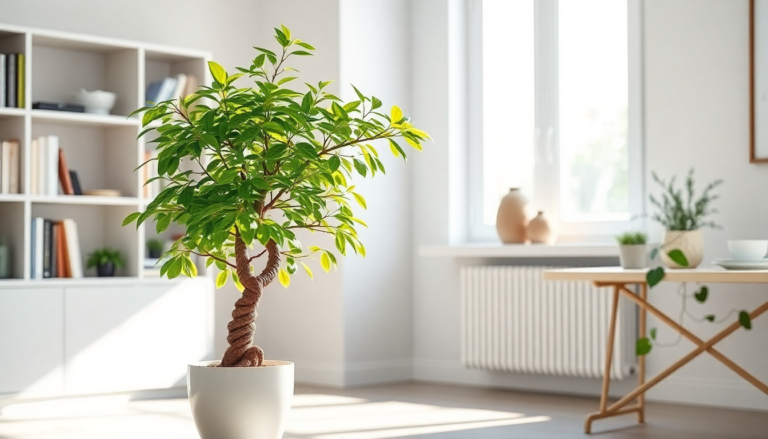Argomenti trattati
- Understanding the money tree and its symbolism
- Ideal growing conditions for your money tree
- Watering techniques and soil requirements
- Humidity and temperature considerations
- Pruning and training your money tree
- Identifying and managing pests
- Common issues and troubleshooting
- Repotting your money tree
- Final thoughts on money tree care
Understanding the money tree and its symbolism
The money tree, scientifically known as Pachira aquatica, is more than just a beautiful indoor plant. Often recognized for its distinctive braided trunk and glossy leaves, this tropical gem is believed to symbolize luck and prosperity. Originating from Central and South America, the money tree thrives in a warm environment and is commonly associated with good feng shui practices. Whether you’re a seasoned plant enthusiast or a novice gardener, incorporating a money tree into your home decor can not only beautify your space but also potentially attract financial success.
Ideal growing conditions for your money tree
To ensure your money tree flourishes, it’s essential to replicate its natural habitat as closely as possible. Despite being a tropical plant, the money tree adapts well to indoor conditions, provided that the temperature remains consistent and humidity levels are adequate. Aim to maintain a temperature range between 65°F and 85°F. Keep your money tree away from direct heat sources, such as radiators or vents, to prevent stress. Additionally, this plant prefers bright, indirect sunlight, so placing it near an east, west, or south-facing window is ideal. Avoid darker areas, as insufficient light can stunt its growth.
Watering techniques and soil requirements
One of the most critical aspects of caring for a money tree is mastering the art of watering. Overwatering is a common mistake that can lead to root rot, so it’s vital to let the soil dry out between waterings. Water your money tree every one to two weeks, ensuring that excess water drains from the pot’s holes. A well-draining soil mix is essential for preventing water retention. To determine when to water, simply insert your finger into the soil; if it feels dry a couple of inches down, it’s time to hydrate your plant. This attention to detail will help your money tree thrive.
Humidity and temperature considerations
As a tropical plant, the money tree thrives in humid conditions. To mimic its native environment, consider placing a humidity tray filled with water beneath your plant, or use a humidifier nearby. Grouping your money tree with other plants can also help increase humidity levels, benefiting all your green companions. Remember that money trees are sensitive to their surroundings, so keeping them in a stable, warm environment is crucial for their health.
Pruning and training your money tree
Pruning your money tree is an important task that should be done annually, preferably in the spring when the plant is most active. Regular pruning helps maintain its shape and encourages new growth. If you prefer the trendy braided look, you can braid the stems while they are still young and flexible. However, if your tree has matured and developed bark, braiding may be difficult without damaging the stems. Remember, the aesthetics of your money tree are a personal choice, and it can thrive in its natural, unbraided state as well.
Identifying and managing pests
While money trees are generally hardy, they can fall prey to pests like spider mites and scale insects. Regularly check your plant for signs of infestation, such as webbing or sticky residues. If you notice any pests, isolating your money tree can prevent the spread to other plants. Using neem oil monthly can help manage and prevent pest issues effectively. Keeping a watchful eye will ensure your money tree remains healthy and vibrant.
Common issues and troubleshooting
Yellowing leaves or wilting can indicate problems such as overwatering, insufficient light, or pest infestations. If your money tree’s leaves are browning and crispy, give it a thorough watering and relocate it to a less sunny spot to recover. Conversely, if your plant is not producing new leaves, it may not be receiving adequate light. Adjusting its location or adding a grow light can stimulate growth.
Repotting your money tree
Money trees have a shallow root system, which means they don’t require frequent repotting. Typically, every two to three years is sufficient, especially when you notice roots peeking through the drainage holes. When repotting, select a pot that is just slightly larger than the current one to avoid excess water retention. Wider, shallow pots are preferred, as they promote healthier growth without the risk of root rot.
Final thoughts on money tree care
With the right care, a money tree can thrive for over a decade, becoming a beloved part of your indoor garden. It not only beautifies your space but also symbolizes hope and financial abundance. Whether you’re gifting one to a friend or welcoming it into your own home, a money tree can bring a touch of nature and positivity into your life. Embrace the journey of plant parenting and enjoy the satisfaction of watching your money tree flourish with each passing season.

